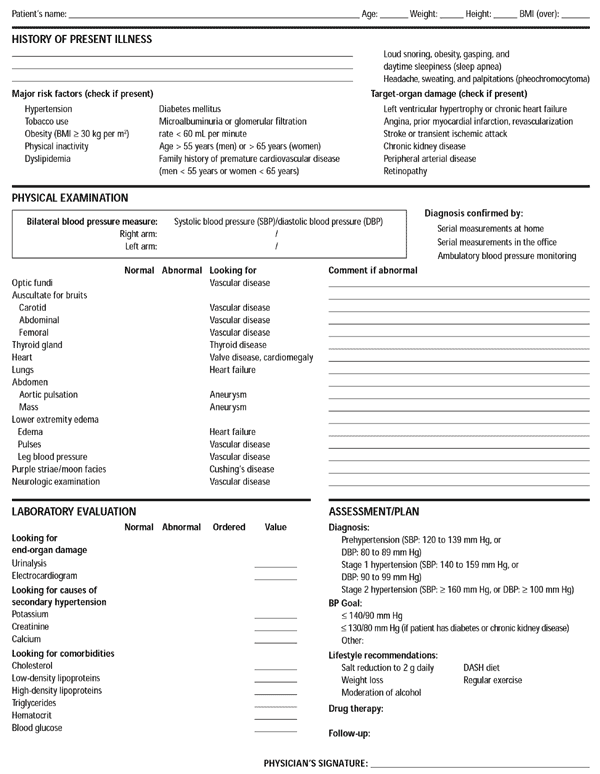
Am Fam Physician. 2004;69(6):1485-1487
Evidence Summary
The Joint National Committee on Prevention, Detection, Evaluation, and Treatment of High Blood Pressure recently released its seventh report (JNC 7).1 This guideline takes a largely evidence-based approach to the development of recommendations. Key changes from the previous guideline (JNC VI, 1997) include the addition of a “prehypertension” category, revised recommendations for patients with important comorbidities, and the recognition that most patients need at least two drugs to control their hypertension.
An executive summary of the JNC 7 report is available online (http://www.nhlbi.nih.gov/guidelines/hypertension/express.pdf). The guideline also is discussed in an editorial2 and a practice guideline3 summary that appeared in the July 15, 2003, issue of American Family Physician.
The JNC 7 report provides a two-page quick-reference card (http://www.nhlbi.nih.gov/guidelines/hypertension/phycard.pdf). This guide takes that card one step further by presenting a two-page evidence-based encounter form for the initial evaluation of the patient with hypertension. The form begins with a focused history that helps the physician assess the patient for cardiovascular risk factors, target-organ damage, and secondary causes of hypertension. The directed physical examination also focuses on possible causes of secondary hypertension, such as renovascular disease, heart failure, and Cushing’s disease. It also helps the physician identify signs of target-organ damage, such as peripheral vascular disease.
A directed laboratory evaluation completes the survey for target-organ damage and the initial evaluation for secondary hypertension. It should be noted that the JNC 7 report recommends pursuing more invasive testing only in the following circumstances: if the initial evaluation raises suspicion for secondary causes; if the patient’s hypertension is difficult to control; if blood pressure responds poorly to drug therapy; or if onset of hypertension is sudden.
Another section of the encounter form provides target blood pressures, lists recommendations for lifestyle changes, and provides a place for the physician to record the initial choice of drug therapy (if any) and a recommendation for follow-up.
The encounter form also provides several support tools:
A list of secondary causes of hypertension and suggested tests for initial evaluation of these conditions
A guide for initial drug selection based on comorbidities
Usual dosages of commonly used generic drugs
A table for quickly determining body mass index
Use of this encounter form should make it easier for family physicians to provide care that is consistent with the JNC 7 guidelines, resulting in improved outcomes for their patients.
